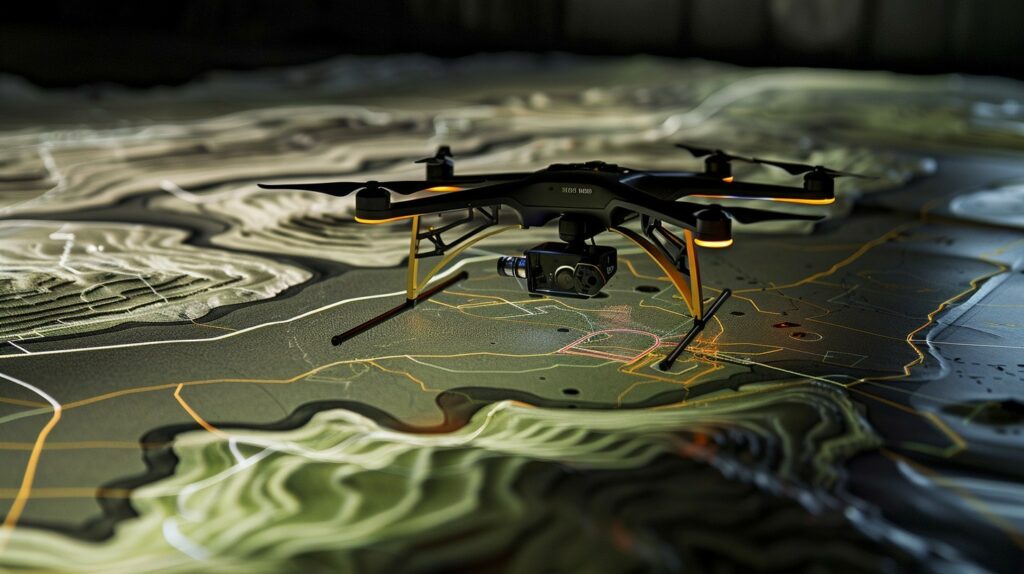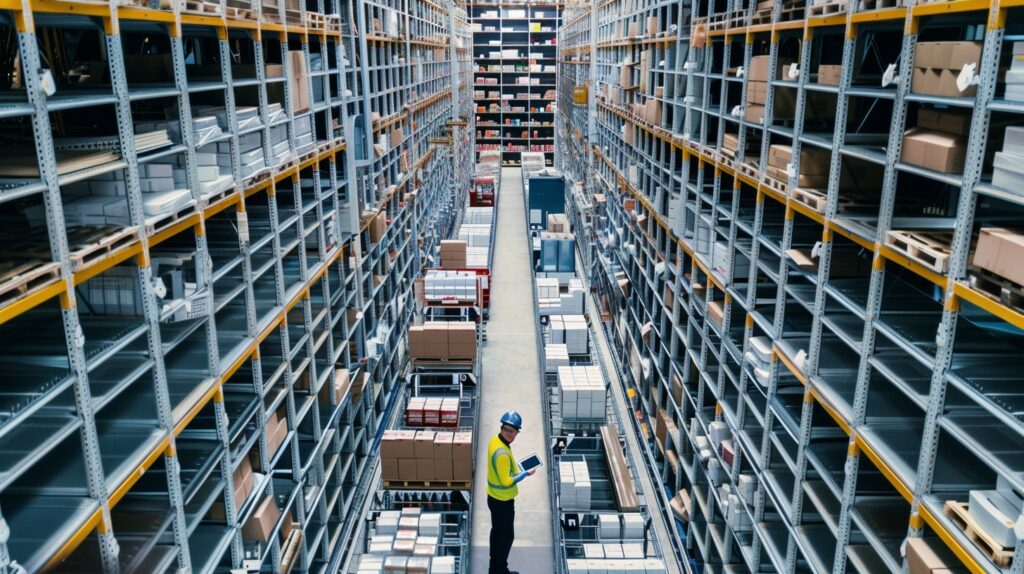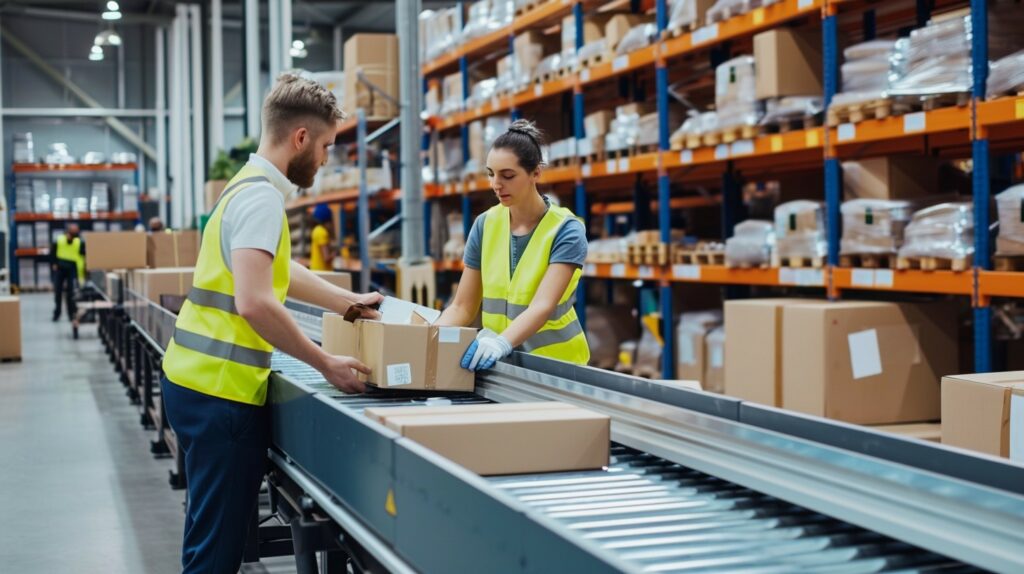Are you ready to step into the future of logistics and supply chains? How do you think warehouse automation is reshaping the industry landscape?
With the rapid evolution of technology, we’re seeing an unprecedented shift in how goods are stored, managed, and delivered.
Warehouse automation leverages cutting-edge technologies like AI, robotics, and sophisticated inventory management systems to streamline operations and enhance performance.
For instance, the integration of autonomous vehicles and drones pushes these efficiencies beyond the warehouse, revolutionizing delivery systems and ensuring faster, more reliable service. But there’s so much more!
As we dive deeper into these advancements, it’s clear that embracing automation technology is not just a trend—it’s essential for staying competitive in a rapidly evolving marketplace.

Source: StockCake
10 Emerging Trends in Warehouse Automation
Before delving into the specific trends shaping warehouse automation, it’s important to consider the broader context of its impact. The warehouse automation sector is rapidly expanding, with a predicted growth from $49.6 billion in 2020 to $69 billion by 2025.
This growth underscores the critical role of automation in enhancing operational efficiencies and meeting increasing consumer demands. These developments set the stage for understanding the significant trends in warehouse automation detailed in the following sections.
#1: Expansion of Mobile Robotics
The surge in mobile robotics in the warehousing sector exemplifies a shift toward greater operational agility.
According to Interact Analysis, the mobile robotics market is expected to grow from $3.6 billion in 2021 to an impressive $18 billion by 2025. This rapid expansion is indicative of the industry’s shift towards enhancing speed and adaptability in logistics operations. Companies like Amazon and Ocado have pioneered the integration of mobile robots, transforming their warehouse operations into highly efficient hubs.
These robots, equipped with advanced sensors and navigation systems, can move and sort inventory with precision and speed, far surpassing traditional manual methods.
- The Impact: Enhances speed and flexibility in warehouse operations: Mobile robots streamline the movement and management of goods, significantly reducing processing times and adapting to inventory needs dynamically, which in turn supports faster order fulfillment and enhanced customer satisfaction.
#2: Integration of AI and Machine Learning
Artificial Intelligence (AI) and Machine Learning (ML) are pivotal in modernizing inventory management and order processing within supply chains.
Systems like IBM’s Watson supply chain insights and Google Cloud AI provide platforms that analyze large data sets to forecast demand, optimize stock levels, and streamline logistics. These AI-driven systems learn from ongoing operations to continuously improve accuracy and efficiency.
For example, AI algorithms can predict seasonal fluctuations and adjust stock levels in real-time, preventing both overstock and stockouts, thereby reducing operational costs significantly.
- The Impact: Boosts accuracy and efficiency, reduces operational costs: By automating decision-making processes, AI enhances inventory accuracy and operational efficiency, which cuts down on waste and lowers costs due to overstocking or understocking.
#3: Growth of Autonomous Mobile Robots (AMRs)
AMRs in logistics are increasingly being adopted for their ability to operate independently within dynamic environments.
Companies like Boston Dynamics and Fetch Robotics have been at the forefront of developing AMRs that can navigate through warehouses without the need for manual guidance, using technologies such as LiDAR and computer vision.
These robots handle tasks from picking to transporting goods, significantly reducing the need for human intervention and thereby increasing operational throughput.
- The Impact: Reduces human intervention and increases throughput: AMRs streamline complex warehouse tasks, which allows human workers to focus on more strategic operations, thus boosting overall productivity and efficiency.

Source: StockCake
#4: Advanced Inventory Management Systems
Advanced inventory management systems employ AI to perform real-time tracking of stock levels, using platforms like SAP’s Intelligent Asset Management. These systems ensure high precision in monitoring inventory by using sensors and RFID technology to track goods as they move through the supply chain.
Such real-time data allows companies to make immediate adjustments to inventory, thereby significantly enhancing the accuracy of stock levels and reducing the incidence of errors in order fulfillment.
- The Impact: Minimizes stock issues and improves delivery precision: Real-time inventory data helps companies avoid overstocking and understocking, ensuring that the right products are available for shipment as soon as an order is processed, which is crucial for maintaining high customer satisfaction rates.
#5: Implementation of AS/RS Systems
Automated Storage and Retrieval Systems (AS/RS) are critical in optimizing warehouse space and improving the speed of retrieving goods. Major manufacturers like Daifuku and SSI Schaefer provide sophisticated AS/RS solutions that integrate seamlessly into existing warehouse operations.
These systems use automated robots and vertical lifting equipment to store and retrieve items quickly, maximizing vertical space and significantly speeding up the processing of orders.
- The Impact: Optimizes space and speeds up retrieval processes: AS/RS systems reduce the footprint needed for storage and enhance the speed at which items can be accessed, which is particularly valuable in high-volume environments such as e-commerce fulfillment centers.

Source: StockCake
#6: Safety and Ergonomics in Automation
Robotic automation in warehouses not only enhances operational efficiency but also significantly improves safety and ergonomic conditions. Robots like those from Kuka and ABB are designed to handle heavy lifting and repetitive tasks that could pose health risks to human workers.
- The Impact: Decreases workplace injuries and enhances worker satisfaction: By taking over physically demanding tasks, robots help prevent common warehouse injuries associated with lifting and moving heavy objects, thereby enhancing worker safety and satisfaction.
#7: Autonomous Vehicles and Drones in Logistics
The use of autonomous vehicles and drones in logistics is set to revolutionize the delivery landscape. Companies such as Waymo and Amazon Prime Air are pioneering the use of autonomous drones and vehicles to handle deliveries, particularly in the last mile.
- The Impact: Extends automation beyond the warehouse to last-mile delivery: Autonomous delivery solutions ensure that the supply chain is efficient right up to the customer’s doorstep, improving delivery times and reducing logistical bottlenecks.
#8: AI-Enhanced Decision Making
The integration of AI into warehouse operations significantly enhances complex decision-making, impacting the entire supply chain’s efficiency and responsiveness.
Advanced AI systems, such as those developed by startups like DataRobot and advanced research from academic institutions, utilize deep learning and predictive analytics to optimize logistic workflows.
These systems assess vast arrays of data from sensors and logs to predict supply needs and adjust operations preemptively, reducing delays and maximizing resource allocation. For example, AI algorithms can now predict machine failure, seasonal impacts on logistics, and even optimize shipping routes based on real-time traffic data.
- The Impact: Enhances strategic decision-making and reduces waste: AI’s predictive capabilities allow companies to optimize resources and operations, preventing overproduction and excess inventory, which in turn minimizes waste and increases overall supply chain efficiency. This strategic application of AI helps companies stay competitive in rapidly changing markets by being more responsive to consumer demands and supply chain disruptions.

Source: StockCake
#8: Automated Dimensioning Systems
Automated Dimensioning Systems are revolutionizing how logistics operations handle space management by utilizing advanced infrared technology. These systems accurately measure the dimensions of pallets or parcels, ensuring optimal space utilization within storage areas.
This precise measurement facilitates better planning and organization within warehouses, enabling companies to maximize their storage capacity and streamline the packing process, which can directly contribute to reduced transportation costs.
- The Impact: Optimizes space utilization: These systems help warehouses efficiently allocate space, which can lead to reduced costs associated with storage and transportation.
#9: Pick-to-Light Systems
Pick-to-light systems represent a significant advancement in order-picking technology. By using LED displays that guide warehouse workers to the correct storage locations, these systems streamline the picking process, making it faster and more accurate.
Workers receive visual confirmations through scan codes, which significantly reduces the likelihood of human error and increases the speed of order fulfillment.
- The Impact: Increases picking accuracy and speed: Enhances the efficiency of the picking process, leading to faster order processing and reduced labor costs.
#10: Box Erector Machines
Box Erector Machines automate the packaging process by precisely forming, folding, and sealing boxes. This not only saves valuable time but also standardizes the packaging quality.
These machines are particularly beneficial in high-volume shipping environments where time and consistency are crucial. By automating these tasks, businesses can significantly speed up their packaging operations and reduce the need for manual labor.
- The Impact: Streamlines the packaging process: Automates and speeds up the construction of packing materials, which increases overall operational efficiency and reduces labor costs.

Source: StockCake
Takeaways
As we wrap up our journey through the advancements in warehouse automation, it’s clear that the landscape of supply chains is being transformed profoundly, driving further changes that have an extremely positive and powerful impact on business.
- Streamlined Operations: Technologies like mobile robotics and AI have turbocharged the efficiency and speed of warehouse operations, pushing the boundaries of what’s possible.
- Enhanced Accuracy and Reduced Waste: Automated systems are not just about speed; they also bring unprecedented precision, significantly cutting down on waste.
- Safer Work Environments: The introduction of robotics has made warehouses safer and more ergonomic, directly improving worker satisfaction and safety.
In essence, embracing these innovations in warehouse automation isn’t just keeping up with the times—it’s setting the pace for the future of logistics.
